Being a fan of traditional German baking, I’ve always been captivated by the allure of a classic German cheesecake. Light, airy, and irresistibly creamy, this dessert is a true gem in the world of sweets. While the authentic recipe calls for quark, a common ingredient in Germany, I’ve crafted a version that can be easily recreated with cream cheese and Greek yogurt, making it accessible to all. This adaptation, which I like to call German-style cheesecake, promises the same delightful flavors and textures.
If you’ve ever savored a slice of cheesecake in Germany, you’ll understand the subtle nuances that set it apart from its American counterparts. This German cheesecake, known as Käsekuchen, boasts a smooth texture and a rich flavor profile that’s perfect for any occasion. Whether enjoyed with a dollop of whipped cream or adorned with your favorite toppings, this recipe is a must-try for any dessert enthusiast.
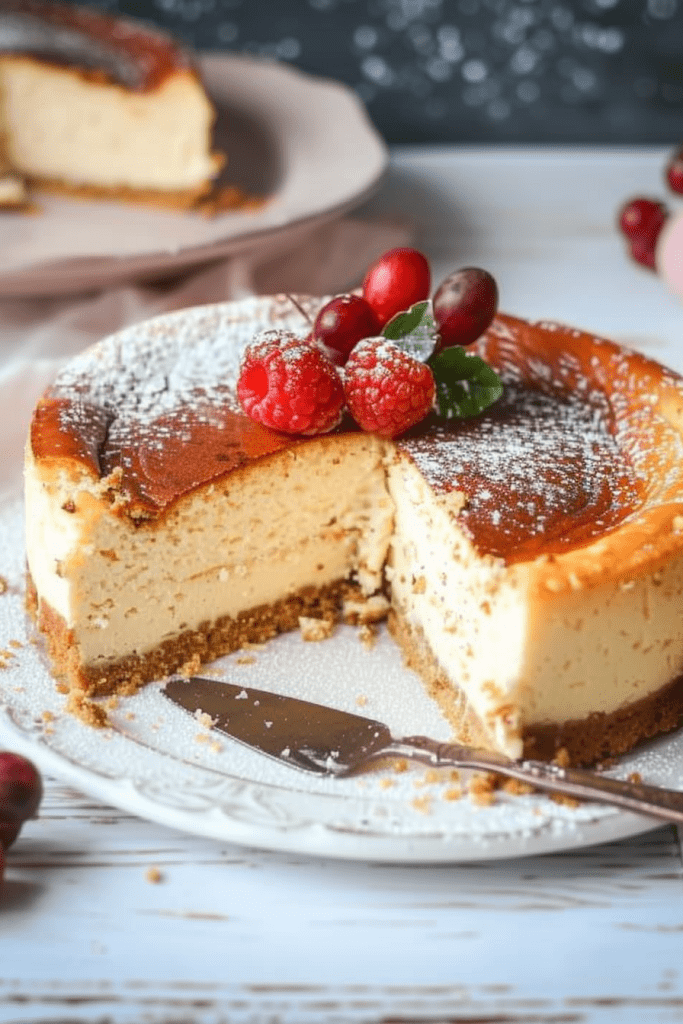
Essential Ingredients for German Cheesecake
German cheesecake, known as Käsekuchen, is a delightful dessert with a unique flavor profile. Here are the essential ingredients you’ll need to create this traditional treat:
Crust Ingredients
- 1 cup all-purpose flour
- 1/3 cup sugar
- 1 egg
- 1/4 cup unsalted butter
- 1/2 teaspoon baking powder
For the crust, you’ll combine these simple ingredients to create a sturdy base for the cheesecake.
- 1 lb quark (or substitute with cream cheese and Greek yogurt)
- 4-6 eggs
- 1/2 cup oil
- 1 cup sugar
- Lemon juice and lemon peel
- Vanilla sugar or vanilla extract
The creamy and flavorful filling of the German cheesecake is a combination of these key ingredients.
Equipment Needed
Kitchen Tools for Cheesecake
For making this delicious German cheesecake recipe, you will need the following kitchen tools:
- 9-inch springform pan
- Stand mixer with paddle attachment
- Mixing bowls
- Measuring cups and spoons
- Parchment paper
- Knife
- Cooling rack
Having these essential kitchen tools ready will make the process of creating this German cheesecake smooth and enjoyable.

Step-by-Step Instructions
Preparing the Crust
To begin, preheat the oven to 350º Fahrenheit and line the base of a 10-inch springform pan with parchment paper. Next, mix together softened butter, sugar, and vanilla sugar until creamy. Add an egg and combine. Then, incorporate flour, baking powder, and salt until a dough forms. Chill the dough for later use.
Making the Cheesecake Filling
For the filling, whip up egg yolks, sugar, cornstarch, salt, quark, sour cream, lemon zest, and lemon juice until smooth. In a separate bowl, whip egg whites and heavy cream until soft peaks form. Gently fold the egg whites and whipped cream into the quark mixture to create a light and airy filling.
Baking and Cooling
Assemble the cheesecake by pressing the chilled crust dough into the prepared springform pan, covering the bottom and sides. Pour the cheesecake filling over the crust and smooth the top. Bake the cheesecake at 350º Fahrenheit for about 60 minutes until set. After baking, let the cheesecake cool in the oven with the door slightly ajar. Once cooled, chill the cheesecake in the refrigerator before serving.
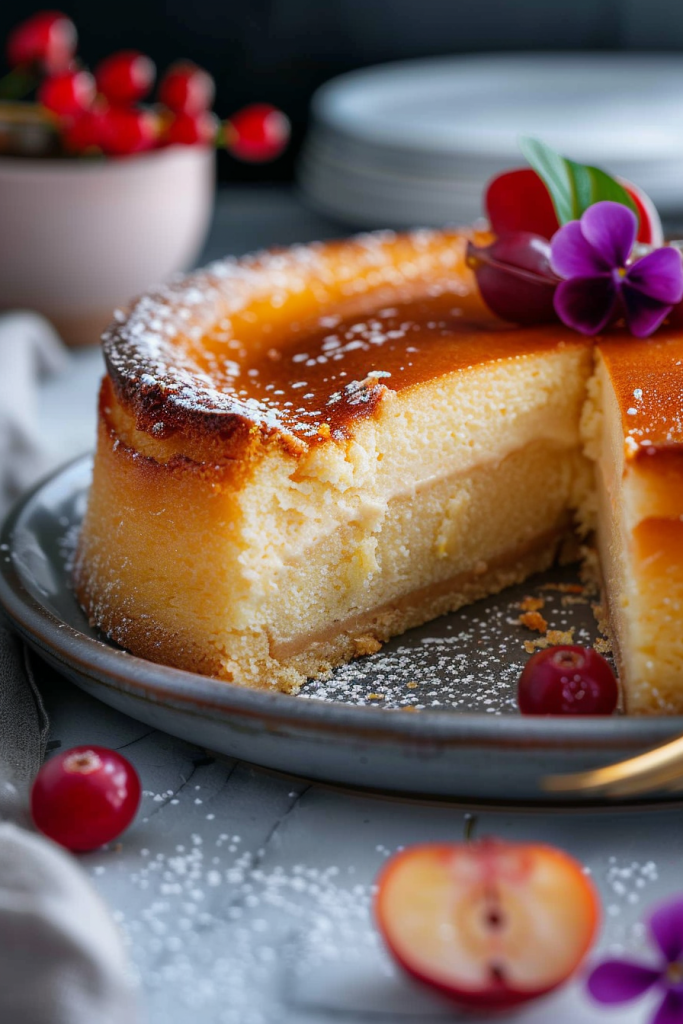
Key Differences: German Cheesecake vs. American Cheesecake
When comparing German cheesecake to its American counterpart, several key differences emerge in terms of ingredients, texture, and flavor profile. Understanding these distinctions can help you appreciate each type of cheesecake for its unique qualities:
Ingredients:
- German Cheesecake: Traditionally made with quark, a fresh dairy product similar to cream cheese but with a lighter texture and tangier flavor.
- American Cheesecake: Typically prepared using cream cheese as the main ingredient, resulting in a richer and denser texture compared to German cheesecake.
Texture:
- German Cheesecake: Known for its light and fluffy texture due to the use of quark, giving it a delicate consistency that melts in your mouth.
- American Cheesecake: Characterized by its dense and creamy texture, attributed to the higher fat content in cream cheese, resulting in a velvety smoothness.
- German Cheesecake: Offers a subtle tanginess and freshness from the quark, complemented by hints of lemon zest and vanilla, creating a balanced and refreshing flavor profile.
- American Cheesecake: Exhibits a rich and indulgent flavor with a pronounced cream cheese taste, often enhanced with additional sweeteners and flavorings like sour cream or heavy cream.
By recognizing these distinctions between German and American cheesecakes, you can choose the style that best suits your preferences and enjoy the delightful variations each has to offer.
How to Make Homemade Quark
To make homemade Quark, you need to follow a few simple steps to achieve that creamy and tangy base for your German cheesecake or other recipes. Here’s how I make my own Quark at home:
Ingredients for Homemade Quark:
- 1 gallon whole milk
- 1/2 cup buttermilk
- Cheesecloth
- Strainer
- Prepare the Milk Mixture:
- In a large pot, heat the whole milk over medium heat until it reaches just below boiling (about 185°F).
- Remove the pot from the heat and stir in the buttermilk.
- Cover the pot and let it sit at room temperature for about 12 hours until the mixture thickens and curdles.
- Drain the Curds:
- Line a strainer with cheesecloth and place it over a bowl.
- Gently pour the thickened milk mixture into the cheesecloth-lined strainer.
- Let it drain in the refrigerator for 12-24 hours until the desired consistency is reached.
- Store the Homemade Quark:
- Once the Quark has reached the desired thickness, transfer it to an airtight container and store it in the refrigerator for up to a week.
By following these simple steps, you can make your own creamy and delicious Quark at home, ready to be used in your favorite German cheesecake recipe or as a versatile ingredient in various dishes. Enjoy the process of creating this traditional dairy product that adds a unique touch to your culinary creations.
Flavor Variations and Substitutions
Alternative Flavor Add-ins
When it comes to exploring different flavors in German cheesecake, there are a variety of creative add-ins you can incorporate to customize your dessert. Consider adding fresh berries like raspberries, blueberries, or even a combination of fruits to introduce a burst of freshness. For a nutty twist, chopped almonds or hazelnuts can provide a delightful crunch to your cheesecake. Additionally, a hint of cinnamon or nutmeg can add a warm and fragrant layer of flavor to the classic recipe, giving it a unique and aromatic touch.
Substitutes for Quark
If you’re unable to find quark for your German cheesecake recipe, there are suitable substitutes that can maintain the essence of the dessert. One popular substitute is strained Greek yogurt, which offers a similar tanginess and creamy texture to quark. Avoid using ricotta as a replacement, as it can alter the texture and result in a grainy consistency. Ensure the selected substitute is strained or thick enough to mimic the richness of quark, allowing you to enjoy a delicious German cheesecake even without the original ingredient.
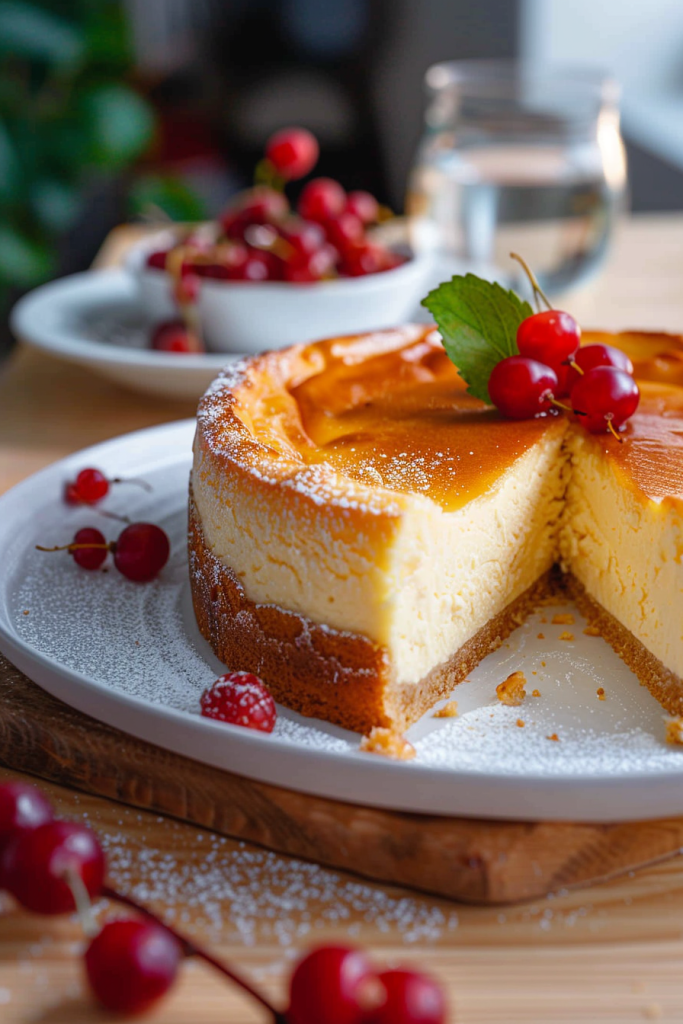
Serving and Presentation Tips
German cheesecake is a delightful treat that deserves to be served and presented in ways that enhance its flavors and appearance. Whether enjoyed on its own or with accompanying toppings, here are some tips to elevate your German cheesecake experience.
Best Ways to Serve German Cheesecake
- Classic Style: Enjoy a slice of German cheesecake as is, savoring the creamy texture and tangy flavor of the quark filling.
- Enhanced with Berries: Add a pop of color and freshness by topping your German cheesecake with a selection of fresh berries such as strawberries, blueberries, or raspberries.
- Accompanied by Coffee: Pairing your German cheesecake with a cup of coffee is a traditional way to indulge in this dessert, enhancing the overall experience.
- Breakfast Delight: Embrace the German tradition of enjoying cheesecake for breakfast. Its light texture and subtle sweetness make it a perfect morning treat.
- Afternoon Snack: Serve a slice of German cheesecake alongside a cup of tea for a relaxing afternoon snack. The balanced flavors make it a versatile option for any time of day.
- Fresh Berry Topping: Arrange a mix of fresh berries on top of the cheesecake in a visually appealing pattern for a vibrant and fruity presentation.
- Powdered Sugar Dusting: Lightly dust the cheesecake with powdered sugar just before serving to add a touch of elegance and sweetness.
- Floral Garnishes: Consider decorating your German cheesecake with edible flowers such as pansies or violets for a beautiful and delicate finishing touch.
- Whipped Cream Swirls: Enhance the visual appeal of the cheesecake by adding swirls of freshly whipped cream on top, creating a decadent and inviting presentation.
- Chocolate Drizzle: For a touch of indulgence, drizzle melted chocolate over the cheesecake before slicing to elevate its appearance and add a hint of richness to each bite.
By incorporating these serving and presentation tips, you can create a memorable and visually stunning experience when enjoying German cheesecake. Experiment with different variations to find the perfect presentation that suits your taste and style.
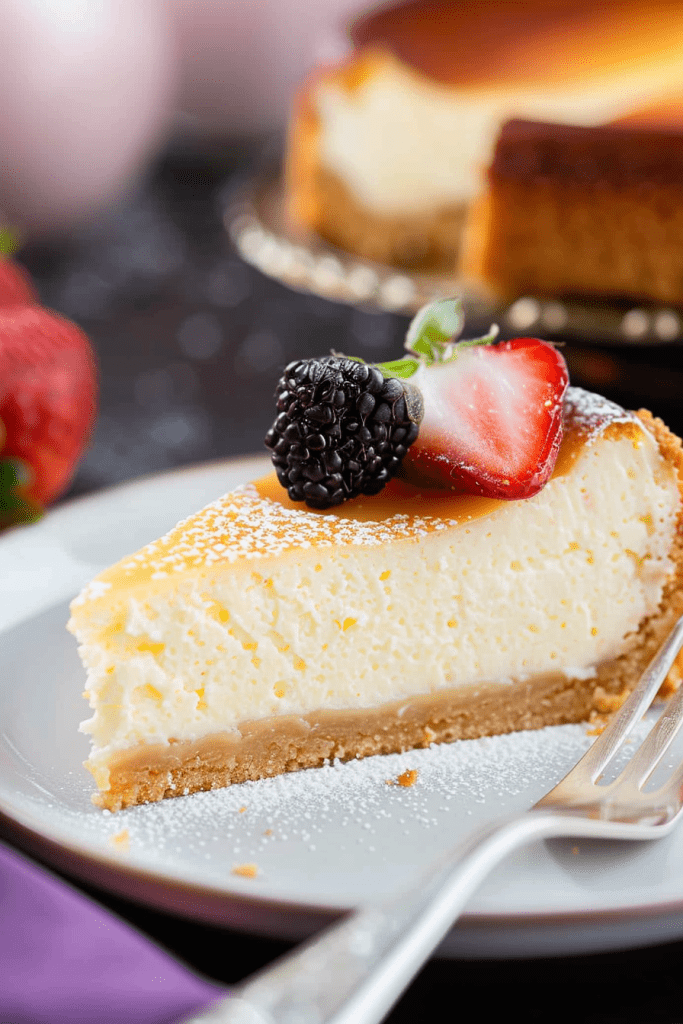
Storing and Freezing
How to Store
Once the baked German cheesecake has cooled, store it in the fridge for 3-4 days in an airtight container. To extend shelf life, store individual portions in airtight containers. When ready to enjoy, allow the slices to defrost at room temperature for the best texture.
Freezing Instructions
While cheesecake made with fresh fruit doesn’t freeze well, you can freeze plain German cheesecake successfully. Store the cheesecake in appropriate portions in airtight containers, ensuring a tight seal to prevent freezer burn. Your slices should stay good for up to three months. Defrost frozen German cheesecake at room temperature for optimal taste and texture.
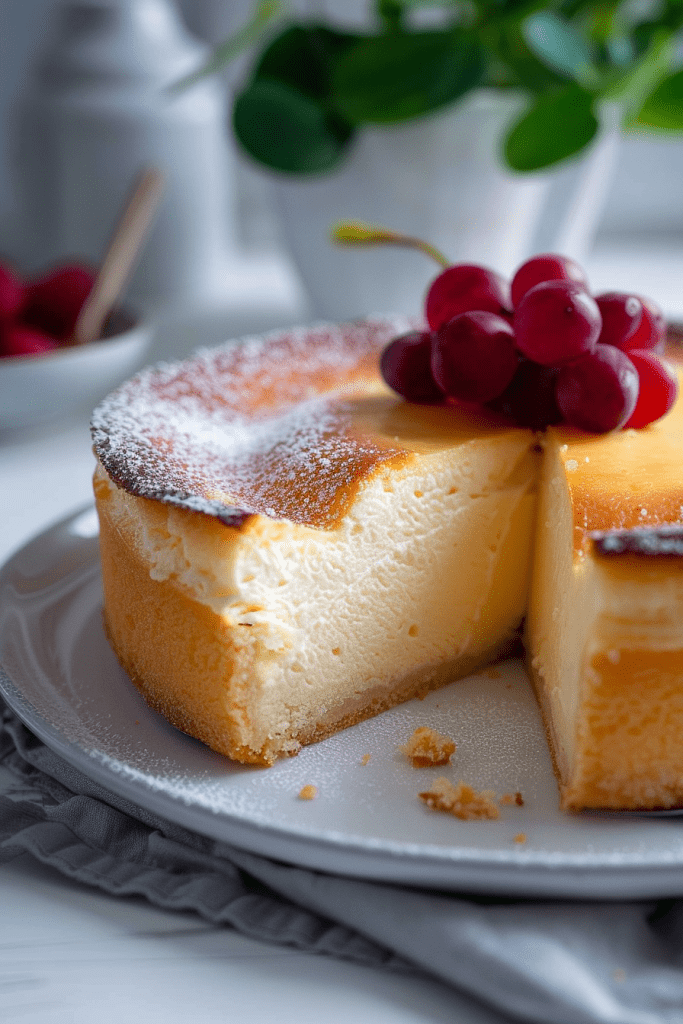
Conclusion
Exploring German cheesecake recipes has been a delightful journey. From the traditional Käsekuchen to modern variations, the light and creamy texture of this dessert never fail to impress. By understanding the key ingredients and serving techniques, one can create a memorable experience for themselves and their guests. Whether enjoyed with fresh berries or a cup of coffee, German cheesecake offers a versatile option for any occasion. Remember to store it properly to maintain its freshness and taste. With a few simple tips and tricks, you can elevate your cheesecake game and savor the delicious flavors of this beloved German treat. Happy baking and indulging in the world of German cheesecakes!
